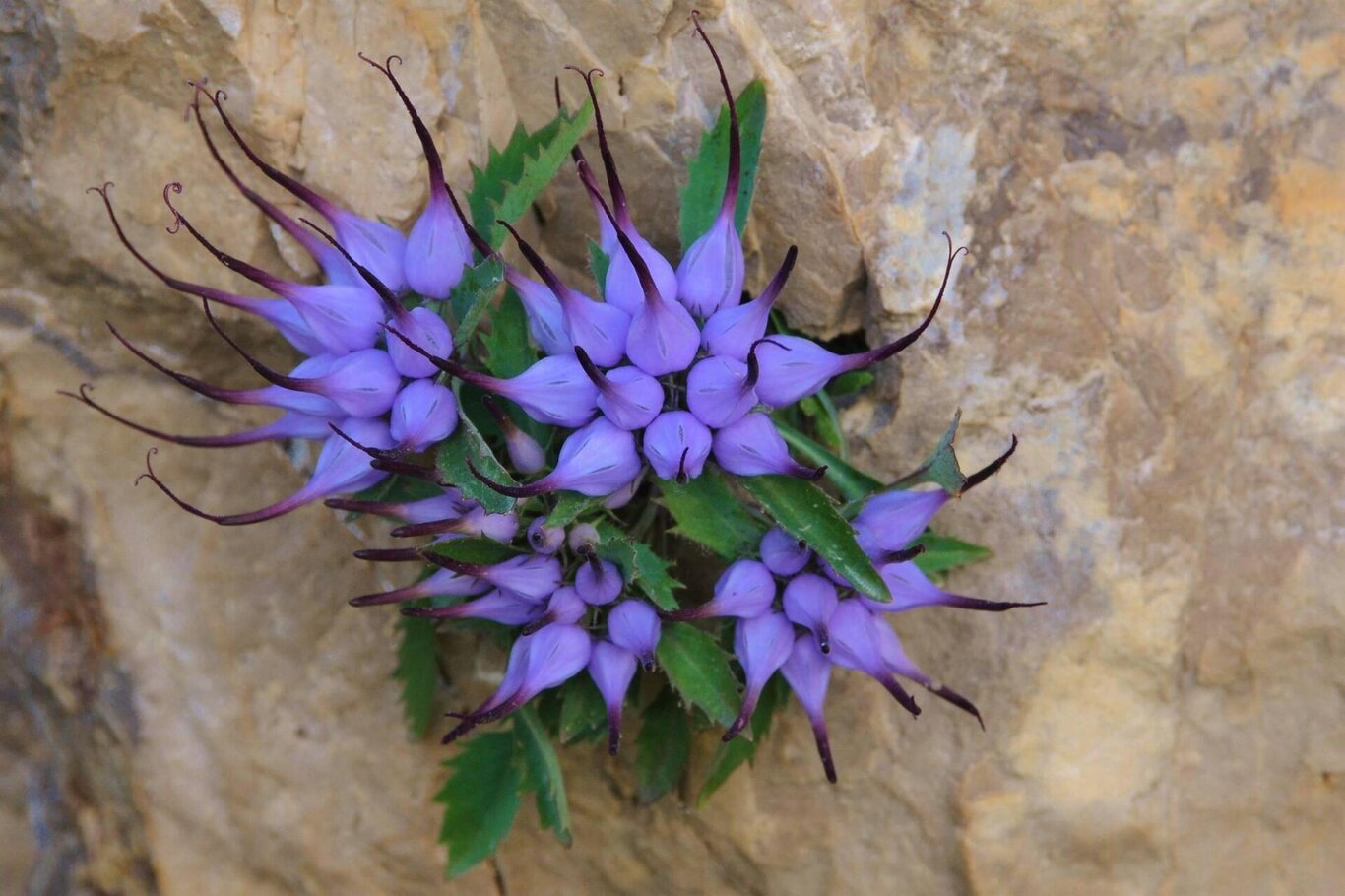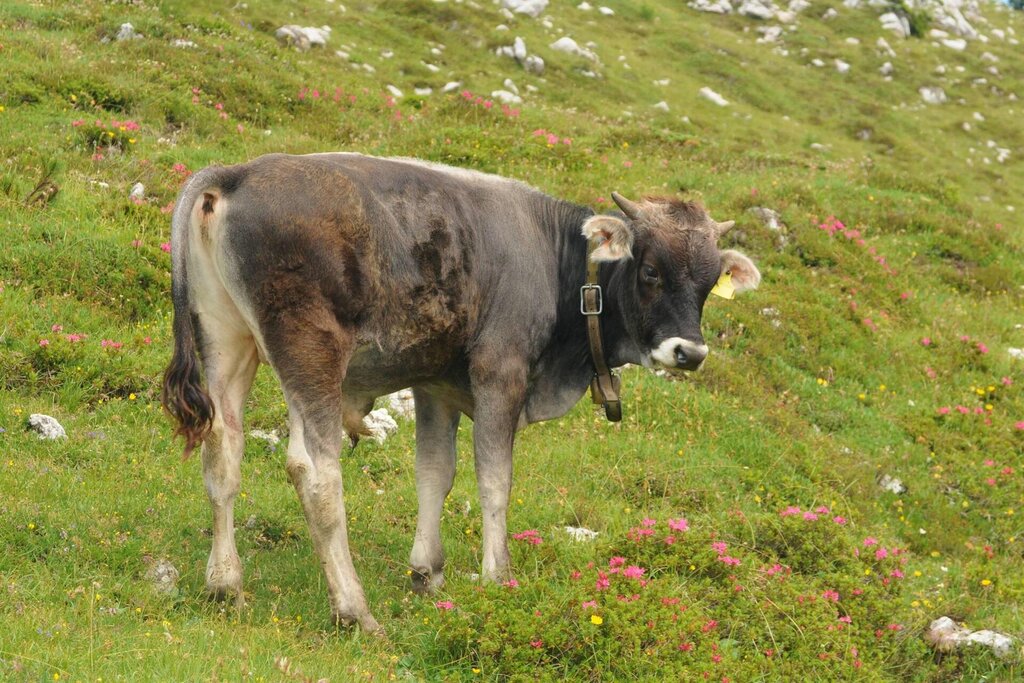The itinerary starts from the church of Norcen, where there are some parking spaces and a picnic area. From here, after 20 meters, the mule track branches off to the right and, crossing a sparse forest, leads to an intersection in the Trugno area (see itinerary 1 – Zinge for the detailed description).
The path continues uphill for about twenty minutes, until reaching another important crossroads, from which one can head towards the Paradis or the Valle di Lamen (see itinerary 2 – Trugno for the detailed description).
Continuing to the right, the mule track is initially flat, then descends into the mixed forest of spruce and beech and crosses a small depression. Some specimens of non-native pine (Pinus strobus) introduce us to the location marked on the maps as Prà Mauro, likely a transformation of the toponym Prà Maor. On the slope above the road, one can observe a casèra with a stepped gable, an ancient building type likely of Germanic origin.
Now the cart track ascends with some curves and joins a road coming from the left. Following is a stretch in an open environment, dominated by pastures dotted with casère, along the boundary of the Dolomiti Bellunesi National Park. After passing the junction with the itinerary of the foothill churches, one quickly finds oneself at the arch of the road, near the Colmeda spring, which feeds the aqueduct of Feltre. There is also a lime kiln (fornas o calchèra), evidence of a production activity that lasted until the 1930s.
The walk continues along the left side of the valley (Municipality of Feltre), on a flat and comfortable path, with pleasant landscape views. About halfway through the route (2.30 hours from Norcen), the asphalt road leads us gently uphill to the S. Antonio plinth and then downhill to the village of Lamen.
Upon reaching the church, one turns right, passing between the houses. In a few minutes, one moves away from the village, immersing oneself in a pleasant rural landscape. After crossing the meadow, one skirts the small forest that covers a steep slope, until reaching the base of the terrace on which Lamen stands. This leads us back into the territory of Pedavena, specifically in the hamlet of Carpene; the small square welcomes us with the church of San Valentino, a stone fountain, a washhouse and... benches and tables for a pleasant rest!
The itinerary then descends towards a residential area, near the Val di Faont. After passing the houses, a steep mule track leads up to the sight of a casèra; descending along the grassy slope, one quickly reaches the bed of the stream. After crossing a small bridge and a meadow with rustic buildings, one joins the asphalt road that is traveled downhill, until taking the cart track that branches off to the right, between a small rocky wall and a cultivated field.
At this point, one follows the mule track that, higher up, connects to the road leading to Norcen, near the S. Marco Alpine Colony. Climbing up the road, one arrives in the center of the village and subsequently at the parish church, where the itinerary concludes.
DEEP DIVE INTO... The First Inhabitants of the Valley
In the Val di Lamen, there is a thematic route of the Dolomiti Bellunesi National Park, dedicated to the covoli, caves formed by the millennia of erosion of the rock walls and used at various times by humans as shelter and habitation. The largest of these is called Riparo Tomàss. The organic material found in the deepest layers dates back to the Neolithic. During this period, the site was used by men who raised goats, sheep, pigs, and cows, as demonstrated by the abundance of bones left buried in the ground, remnants of the meals consumed. The discovery of some scorched broad beans suggests that there may have also been small cultivated areas nearby. In the center of the shelter, a large oven has been uncovered, where it can be presumed that the inhabitants baked terracotta pots produced on-site. Subsequently, several generations of humans inhabited the area during the Bronze Age. While there are abundant fragments they left in the ground, the number of flint tools is limited. During the Roman and early medieval periods, visits to the covoli continued to be quite frequent, as evidenced by the coins and fragments of terracotta pots collected in the upper layers of the deposit.
USEFUL INFORMATION:
Departure and arrival: Church of Norcen (510 m.a.s.l.)
Locations crossed: Trugno, Grip, Prà Maoro, Fastrede, Stalle alla Fornace, Lamen, Carpene, Val di Faont
Signage: blue and white directional arrows with the inscription “Anello delle Fastrede”
Distance: 9.8 km
Elevation gain: 335 m
Estimated travel time: 5 hours
Difficulty: medium
Recommended period: walkable all year round, but autumn and spring give particular colors to the landscape
Points of interest: village and church of Norcen, landscape of Val di Lamen, kiln in Val di Lamen, little church of S. Valentino in Carpene, typical rural buildings
Notes: a rather long route but with a moderate elevation gain, which crosses the Valle di Lamen and then returns to Norcen. The trail is not difficult, except for some steep sections that can be muddy and a bit uneven; therefore, it is suitable for experienced mountain bikers.
You are in a natural environment that demands respect:
- Prohibition of flower picking
- Prohibition of swimming
- No loud noise
- Prohibition of lighting fires
- Do not leave litter about; dispose of it in designated areas (including cigarette butts, tissue papers, masks, and organic waste)
- Minors must be accompanied
- Dogs must be kept on a leash and their waste collected
- Do not leave the trail
- Do not disturb local wildlife
It is recommended to check the ARPAV website for any disruptions before starting the route.


